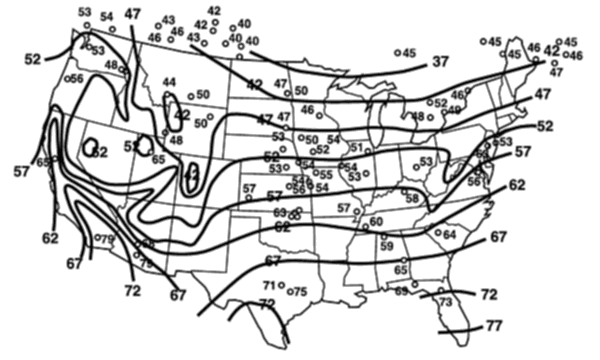Although there are a number of option for low power consumption refrigeration technologies when going off grid, there are none that tick all the boxes of a low cost, sustainable solution. In this articles I’ll introduce my DIY ultra efficient refrigerator / freezer design.
Off Grid Refrigeration Options
Regular Refrigerator / Chest Freezer
Pros. Standard 120V AC refrigerators are common, inexpensive, and easy to get. They can be run in an off grid system with an inverter.
Cons. However, they tend to be fairly inefficient. And combined with the fact that inverts waste 15% or more of your energy in the DC to AC conversion process, it makes sense to look for a more energy efficient naturally DC option. Since reducing energy consumption on an off grid system can save costs on panels, battery, charge controllers, and inverters, it makes sense to invest in good appliances, especially one as essential in an off grid situation as a freezer can be.
Propane / RV Refrigerators
Pros. RVs from many years have had low electricity consumption propane powered refrigerators. These also can be found fairly cheaply, and might be a good option in many cases.
Cons. However, it is difficult to find larger models that would be suitable for self-sustainability and harvest storage. Also, propane is not truly off grid in the sense that you need a constant external supply of it to run your refrigerator. It might be possible to run a propane fridge of Biogas, but that has yet to be proven practical.
Commercial DC Refrigerator
Pros. There are commercial high efficiency DC fridges on the market. If money is not a problem, or you rather have a turnkey solution, then this is probably the best choice.
Cons. They tend to be quite expensive, and are not easily repairable. Because the active components, the refrigerator motor and compressor, are contained, any attempt to repair or replace the active components of the refrigerator would result in loss of refrigerant. Any repair work requires extremely expensive specialty equipment.
Low Tech Solutions
There are also many old-fashioned low tech alternatives to refrigeration such as canning, root cellars, pickling, salting, smoking, etc. These methods can be quite effective, but are generally much more work than simply bagging and freezing can be.
I always recommend a mix of methods, so that there is no single point of failure in your food supply. But, for things like berries, meats, and some vegetables, having the ability the freeze your crop offers significant advantages.
Low Cost Super Efficient DIY “Earth” Refrigerator
In order to combat the difficulties of existing solutions, I’ve been working on an open source design for an ultra efficient low cost DIY solution that is flexible for many different situations.

I call my design because it is both good for the Earth, and because it uses the Earth to help maintain cool refrigerated contents at ultra low energy usage.
Thermo-Electric Cooler
The heart of the system is a Thermo-Electric Cooler (TEC). These TEC modules are long lasting (with an industrial mean time to failure of 200,000 hours). However, in typical industrial use, they are run relatively hard, which means they won’t last as long and they are also less efficient.
Because these modules can be had fairly cheaply online in bulk, my fridge is designed to run with many modules strung in series (and in parallel after a point). This means that:
- We can modularly increase or decrease the cooling capacity based on our needs. Now you can upgrade your refrigerator without having to get a whole new one.
- No single point of failure. With many modules and a completely open source, high quality design, it is unlikely that your Earth fridge fill fail in your lifetime. However, if a module does fail, you have the others to fall back on. And, with a small cache of extra parts, you can fix your controller hardware no matter what happens to it.
Open Source Smart Design
All design files for the “Earth” fridge will be released to the public, which means you have complete control and ability to repair your fridge system.
Modify to meet your needs.
With open firmware, the controller is designed to be reprogrammed and re-purposed. All the pins are exposed and the active elements are general purpose. In essence the board has an intelligently controlled DC-DC converter, several AC and DC sensing inputs, serial in/out, and two mosfet switches for high power devices. This board may find itself useful in a number of intelligent off grid devices.
Monitor and Protect
With the ability to monitor and log internal/external temperature, you will know if anything ever went wrong with your fridge when you weren’t there. And, an external display lets you know at a glance what the temperature is, without having to open the door.
With the addition of external wired or wireless communications hardware, the Earth fridge can be configured to send out a status and heart beat to a central controller. That way, if something goes wrong or fails altogether, you will be notified quickly, so your food storage can be saved in time.
Completely Inspectable
With growing concerns about digital spying and monitoring from governmental and non-governmental agencies, the fact that you or someone you trust can completely inspect ever line of code and every wire of the design means that you are protected from backdoors being inserted that compromise your safety.
Ground Heat Transfer
A key to the design of this module is the ground heat transfer segment of the design. TECs are not particularly efficient compared to typical heat cycle refrigeration. So, one key element of the design is to save as much energy as possible by using the ground to keep our food items cool.

In my design, I included provisions for closed loop water based ground heat exchange. Essentially, cool water from under ground will be pumped to the back of the fridge, taking off waste heat, and flowing back under ground to be cooled again. However, if you already have cold well water or spring water flowing to the location of the fridge you might be able to leverage that water to cool your fridge directly, and eliminate the need for a closed loop and dedicated pump.
DIY Build Your Own Enclosure
The Earth fridge controller is designed to be sized up to refrigeration units of any size. But, they key to maintaining efficiency is proper insulation. Expensive $1k+ solar DC refrigeration units all have very high quality insulation.
But, lucky for us, so does every Lowes and Home Depot. Right now, XPS “pink” foam has some of the highest insulation values on the market, and are reality available on the market. Rigid foam insulation is perfect for refrigerators, because it withstands moisture condensation, is easy to build with, and will last practically forever.
For my designs, I recommend a chest style enclosure, with 2“-4” insulation. However, the more the better. And, you are free to add more over time as a way to incrementally invest in your off grid system.
More To Come
Stay tuned for updates on the prototyping process, plans, build notes. Lot’s more to come on this project.


